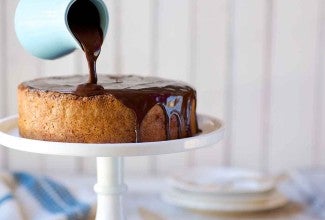An immersion blender is a must-have baking tool
Make silky ganache, smooth pudding, and velvety curds.
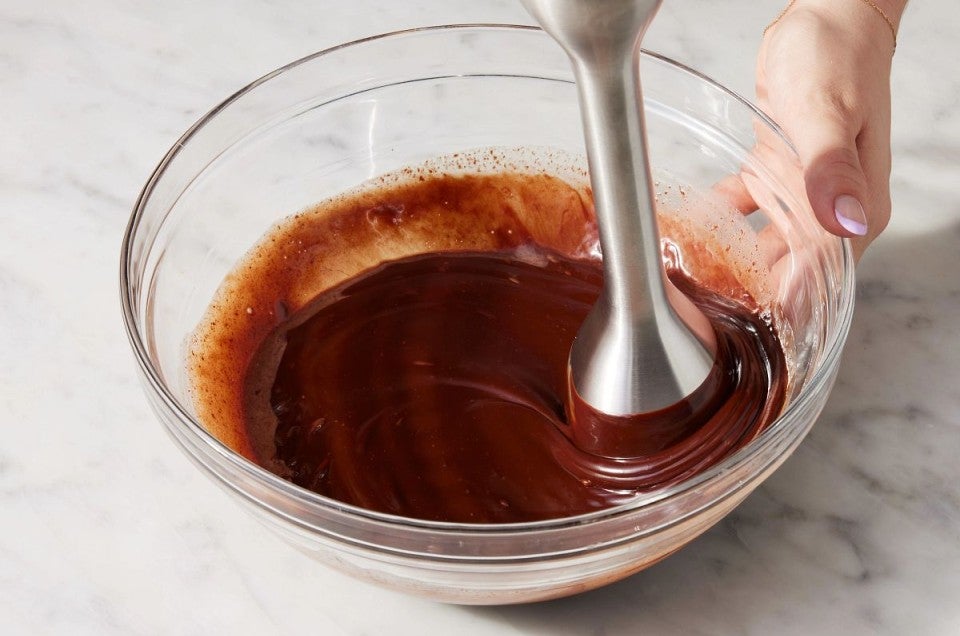

What do silky lobster bisque and lump-free pastry cream have in common? One simple tool: an immersion blender.
Sure, most people probably use their immersion blenders for savory applications like making soup, but I reach for my Breville Control Grip Immersion Blender when I’m baking, too; this versatile hand-held appliance has many uses.
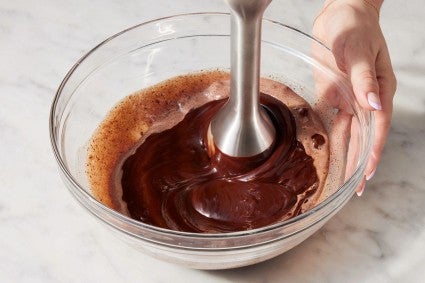
Ganache is relatively simple to make: It typically involves pouring hot cream over chopped chocolate, letting it melt, and then whisking until smooth. It can be relatively straightforward, until the moment you notice pesky lumps of chocolate that won’t disappear, no matter how much you stir. Or worse, your ganache can “break,” when the fat separates from the solids and becomes a greasy mess.
Both problems can be avoided with an immersion blender. Follow the same process of preparing your ganache, but when it comes time to mix it all together, use your immersion blender instead of reaching for a whisk or spatula. The ganache will come together quickly and emulsify beautifully without any lingering bits of chocolate. Ready for pouring on cake or drizzling over truffles!
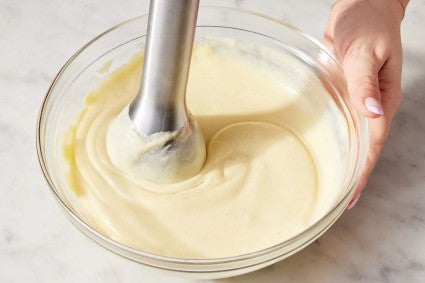
One of the final steps of many stovetop pudding and custard recipes, including pastry cream, is straining the hot mixture through a fine-mesh sieve to remove any lumps. This process can be a pain (it requires pouring hot liquid, lots of stirring and scraping, and creates more dishes), and it doesn’t guarantee a completely smooth texture unless you’re using a superfine strainer — in which case, it’ll take longer for the mixture to pass through.
Skip all that fuss and use an immersion blender right in the saucepan in which the custard is cooked. It’ll break up any bits of unmelted chocolate, fruit, or caramel if you’re making a flavored pudding, and even if you’re just making a standard vanilla base, blending with an immersion blender will eliminate any lingering lumps of cooked egg or sugar. The result is custard with a silky-smooth texture that’s a delight to eat.
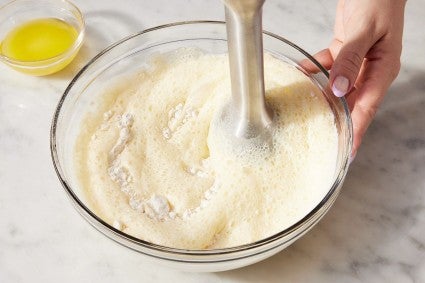
Unlike pancake batter, which requires careful stirring to not overmix, some batters need to be vigorously mixed to develop the right consistency. Both popovers and crêpes fall into this category; most recipes require transferring the batter to a blender and processing until aerated and smooth.
With an immersion blender, this is a quick, one-bowl task. The small blade pulses the mixture and combines the dry and wet ingredients. Continue blending and the batter will become lighter in color and texture, which is ideal for making fluffy popovers and crêpes.
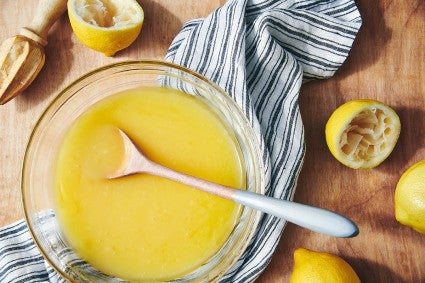
The best curds are made with fresh citrus juice or fresh fruit purée, whether you’re making traditional lemon curd or ruby-red cranberry curd. Those fresh, flavorful bases often contain bits of pulp or fibers from pressing the whole fruit; this, combined with the possibility of accidentally cooking bits of egg in the mixture, means that super-smooth curd can be difficult to achieve.
But with an immersion blender, it’s a cinch. Give the curd mixture a quick buzz with the immersion blender before cooking to ensure the fruit or juice is fully blended, and then again right at the end of cooking to eliminate any bits of coagulated egg.
Most immersion blenders can pull off all the baking tasks we’ve covered up until now. Here’s where the Breville Control Grip Immersion Blender sets itself apart: Rather than coming with just a single blade, it includes two additional attachments that make it even more versatile.
The first bonus attachment is a mini chopping blade. It makes quick work of chopping ingredients like citrus rind for marmalade or candied peel, fresh or frozen berries for jam, or cored apples for applesauce. If you want to take any of these ingredients from roughly chopped to finely puréed, you know what to do: Use the original attachment and blend until smooth.
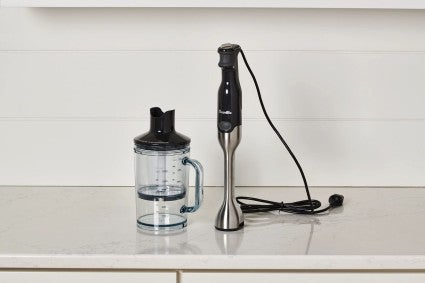
The second attachment that’s a boon to bakers is the mini whisk. The Breville Control Grip Immersion Blender comes with a whisk attachment and a cylindrical blending jug that allows you to submerge the whisk deep into ingredients, even if it’s just a small amount. This means that if you’re looking for the perfect amount of whipped cream for topping two slices of pie, you can have it about one minute flat.
Or perhaps your recipe calls for whipping a single egg white — don’t waste time and energy whisking by hand. Just pull out the mini whisk on your immersion blender and you’ll reach soft peaks in about two to three minutes. (While the mini whisk can also be used to whip large amounts of cream, egg whites, or other ingredients, I found it most helpful when working with smaller quantities of ingredients, when other appliances like a stand mixer just wouldn’t do.)
Notably, not only does using an immersion blender for these baking tasks ensure a better result, but it also makes clean-up quicker and easier. You can blend ingredients right in the bowl (no transferring to a food processor or blender), then pop off the blade attachment and put that single, small piece in the dishwasher.
Whether you're baking, cooking, or just making a smoothie, you can achieve a super smooth texture without lots of extra dishes using an immersion blender. Buy a Breville Control Grip Immersion Blender now… it ships for free!
P.S. I’ll confess that this immersion blender isn’t the only Breville product I’m in love with. See our post on how — and why — I fell in love with a toaster oven.
Cover photo (Chocolate Ganache) by Rick Holbrook; food styling by Kaitlin Wayne.
